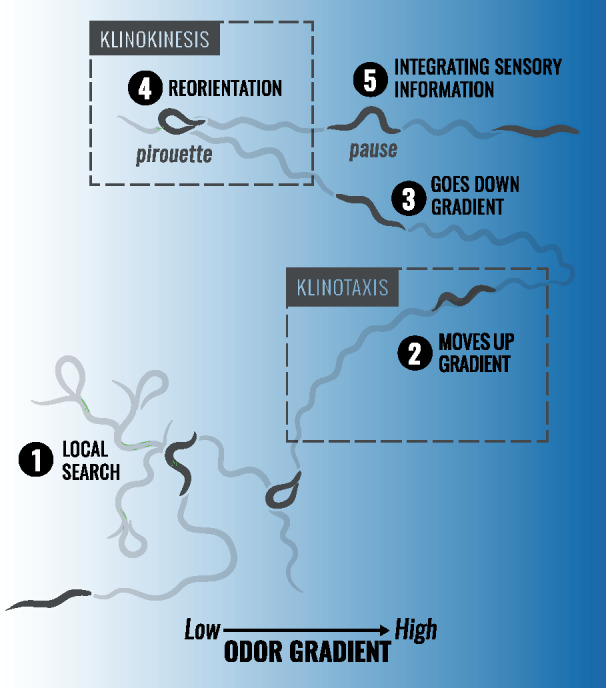Figure A1.

C. elegans movement in a gradient. When initially removed from food, the animal executes a search for food in its local vicinity by making short forward movements, backing and making omega turns (1). If the animal senses an attractive chemical gradient (blue) it can run up the concentration gradient and slightly curve into the higher concentration in a movement pattern called klinotaxis (2). If it veers from the gradient and travels to lower concentrations (3), it can reorient by executing a series of reversals and omega turns (termed a pirouette) from which the head is more likely to be reoriented such that it is directed up the gradient (4). Klinokinesis is also known as a biased random walk in which animals run up a gradient, and if they leave the gradient, reorient with turns. This is the major strategy used to travel up the gradient. Animals have been shown to pause (5), which may allow for sensory integration before resuming the search for the source of the attractive chemical cue.
